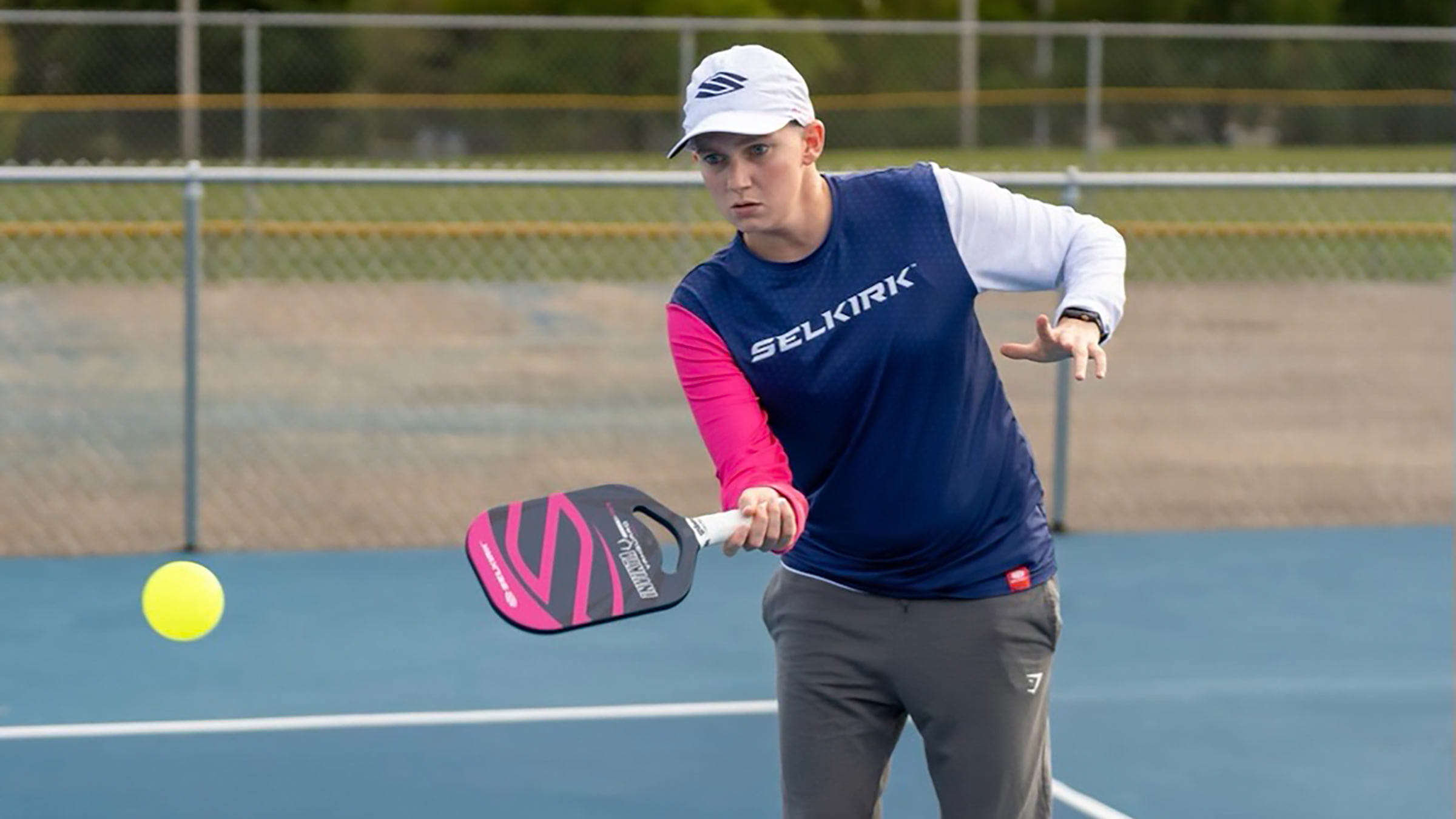Pickleball player plans return to sport after receiving high-tech shoulder replacement alternative

When Jaquelyn Bradshaw’s shoulder became arthritic and kept dislocating, she was told there was a slim chance she would have an active lifestyle again.
The 26-year-old, a pro pickleball player with a passion for orchestra conducting, was devastated.
But thanks to a synthetic surgical material, pyrocarbon, that received FDA approval in the United States for shoulder replacements this year, Bradshaw is back on the court.
Her surgery, performed at The Ohio State University Wexner Medical Center Jameson Crane Sports Medicine Institute, is the first of its kind in Ohio.
“It feels so much better. Even from when I was initially waking up from surgery, I could tell a huge difference. For example, before the surgery, I was sneezing and my shoulder would dislocate,” Bradshaw says. “It was incredibly painful. I couldn’t fall asleep. It was not a good time. I was still trying to play and teach pickleball. I would go for any type of shot and my shoulder would come out.”
The Ohio State Jameson Crane Sports Medicine Institute is one of few centers in the country that uses pyrocarbon material in patients.
Julie Bishop, MD, a clinical professor of orthopedics at The Ohio State University College of Medicine and an orthopedic surgeon who specializes in minimally invasive repairs for complex shoulder injuries, says full shoulder replacements aren’t a good surgical solution for young and active patients like Bradshaw.
Bradshaw had three earlier shoulder surgeries on her right side beginning in her teens. Dr. Bishop performed the fourth surgery to implant the pyrocarbon replacement joint in June 2023.
“When you do a total shoulder replacement, you don’t want them to be 25 years old,” Dr. Bishop says. “There’s more wear and tear than a normal socket. The components loosen and then it takes half the socket with it. Then 10 years later, now they’re 35, and they have a loose socket component. It’s just a really bad situation.”
Bradshaw, whose previous shoulder surgeries were done outside of Ohio State, was left experiencing arthritis and instability that caused her shoulder to often become dislocated, she says.
Before she had an appointment with Dr. Bishop, she was told by another surgeon that she had a 10% chance of having a successful surgery and returning to an active lifestyle.
“That surgeon didn’t know if there was even a procedure that could be done to fix my shoulder. It was one of those scary moments where you just don’t know,” Bradshaw says. “Dr. Bishop had high hopes that this procedure would allow me to do all the things I was doing prior to the injury itself this time. I was just so thankful for that, and being able to move forward in hopes that all this would transpire.”
 Dr. Bishop knew Bradshaw would need a unique surgical approach and, after some research, decided that pyrocarbon might help her.
Dr. Bishop knew Bradshaw would need a unique surgical approach and, after some research, decided that pyrocarbon might help her.
“’We will figure something out. Let me talk to people. Let me go to conferences. Let me present at conferences and see what we can do,’” Bradshaw says she still remembers Dr. Bishop telling her during an appointment.
“I can’t even vocalize how grateful I am for that.”
Traditionally, surgeons use metal titanium shoulder bearings in shoulder surgeries, but Dr. Bishop says the non-metal material has great benefits.
“When you do a partial shoulder replacement, the metal ball can really wear through whatever cartilage is left on the socket, and still create socket problems,” Dr. Bishop says. “The benefit of pyrocarbon is that it’s a different material that’s supposed to be closer to your native bone and not wear through. It allows the ball replacement to last a long time without damaging the socket.
“Pyrocarbon has some big differences compared to titanium. It’s lighter. It mimics your natural bone, your natural joint,” Dr. Bishop says. “That's the whole reason behind it.”
For Bradshaw, she’s working on returning to the court.
“I don't necessarily know what my range of motion will be. We’re working to get as much as possible,” she says. “I am in no pain whatsoever. My shoulder is super stable. I just signed a new professional pickleball contract about a month ago. It's been really exciting to get back and start playing.”

Ready to stop the pain?
Schedule an appointment with one of our orthopedic experts.
Get started



